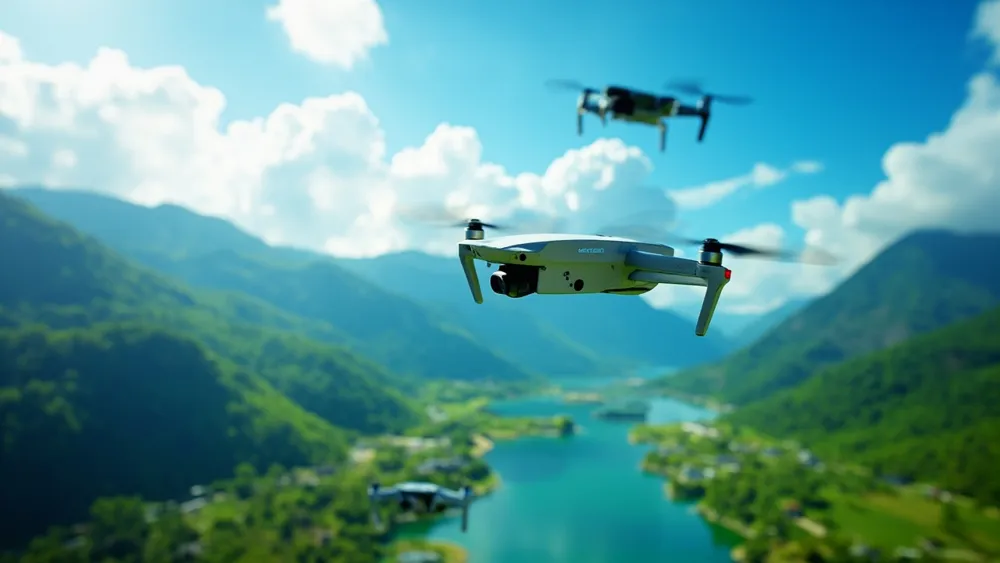"Silk Road Expo Shines Spotlight on Low-Altitude Economy"

XI'AN, May 23 (Xinhua) -- The burgeoning low-altitude economy is prominently on display at the ninth Silk Road International Exposition held in Xi'an, the capital of Shaanxi Province. The expo, which runs from May 21 to 25, features a dedicated exhibition area of approximately 10,000 square meters showcasing cutting-edge unmanned aircraft and digital platforms for airspace management. This event highlights the increasing relevance and potential of the low-altitude sector within China's broader economic landscape.
Representing over 300 enterprises, the exhibition features more than 100 aircraft, including a range of fixed-wing models and multi-rotor drones. Among the notable displays is an unmanned aircraft that made its maiden flight in Shaanxi back in 1958, along with various modern electric vertical take-off and landing (eVTOL) aircraft. This combination of historical and contemporary technology underscores the rapid advancements being made in this sector.
Xi'an ASN Technology Group Co., Ltd. is notably present at the expo with over 10 industrial drones, including an innovative eVTOL. This unmanned aircraft boasts a wingspan of 5.2 meters and a payload capacity of up to 30 kg, making it suitable for carrying aerial cameras, emergency supplies, and various equipment. The versatility of this eVTOL showcases its potential applications in logistics, infrastructure inspection, and emergency response.
Shaanxi Province has established itself as a powerhouse in low-altitude economic development, with a well-developed industrial chain that extends to aviation production and its various applications in tourism, crop protection, and urban environmental management. In 2024, the region's aviation and unmanned aircraft production industry is expected to generate an output of nearly 200 billion yuan, translating to about 27.8 billion U.S. dollars.
At the expo, Shaanxi Transportation Holding Group presented a three-dimensional sand table model illustrating how the integration of road and air infrastructure can bolster the low-altitude economy. They anticipate that leveraging existing power and communication frameworks could potentially reduce upfront investment costs for low-altitude infrastructure by as much as 50 percent. Their innovative vision includes using roadside airspace and creating take-off and landing sites at strategic locations, such as toll stations and expressway service areas.
The inclusion of this exhibition area reflects China's strategic emphasis on developing the low-altitude sector. The significance of this initiative is underscored by its inclusion in the government work report for two consecutive years, highlighting its importance within national policy. In a further acknowledgment of the industry's growth, the drone fleet flight planner role was recognized as a new profession by the country's human resources authorities.
As the low-altitude landscape evolves, effective supervision and management are becoming paramount, especially given the rapid increase in unmanned aircraft use. China Telecom has showcased a low-altitude service supervision and management platform at the expo, which provides real-time monitoring of aircraft and trajectory conflict detection, thereby enhancing airspace flow management and safety.
Forecasts from the Civil Aviation Administration of China suggest an explosive growth trajectory for the low-altitude economy, predicting that its market value will rise from 500 billion yuan in 2023 to an astounding 1.5 trillion yuan by 2025, with the potential to reach 3.5 trillion yuan by 2035. This anticipated growth highlights the sector's significance as an emerging driver of high-quality development within China's economy.
Lin Dong, a product manager with the Xi'an Highway Research Institute, emphasized the government's commitment to this emerging sector. He stated that there are plans for a comprehensive integration of road network resources to develop a vertical 'aerial expressway network,' which aims to create a synergetic transportation system that encompasses management, maintenance, and operations, propelling the low-altitude economy further into the forefront of innovation and infrastructure development.
Read These Next

Wuhan Women’s Football Team Wins First AFC Champions League Championship
Wuhan Che Gujiang University Women’s Football Team won the AFC Women’s Football Club Champions League, marking a milestone for women’s sports.

Companies Use AI to Navigate Turbulence from Trump Tariffs
Businesses increasingly leverage AI to manage complexities arising from U.S. tariffs, as firms like Salesforce and Kinaxis deploy sophisticated systems to optimize supply chains during turbulent trade times. This evolution reveals the potential for AI to counter regulatory challenges while also presenting new risks and strategic considerations for companies and investors alike.

Uruguayan Products Surge in Western China Through New Land-Sea Trade Corridor
Uruguayan amethyst and premium beef thrive in western China due to the New International Land-Sea Trade Corridor, boosting trade.
